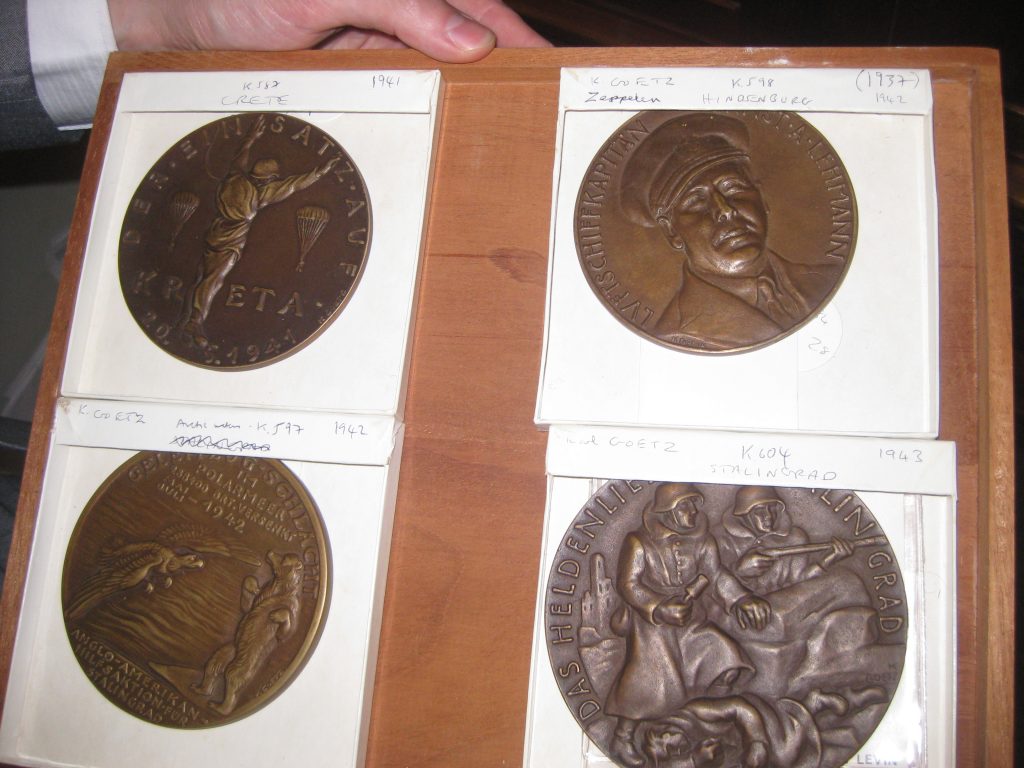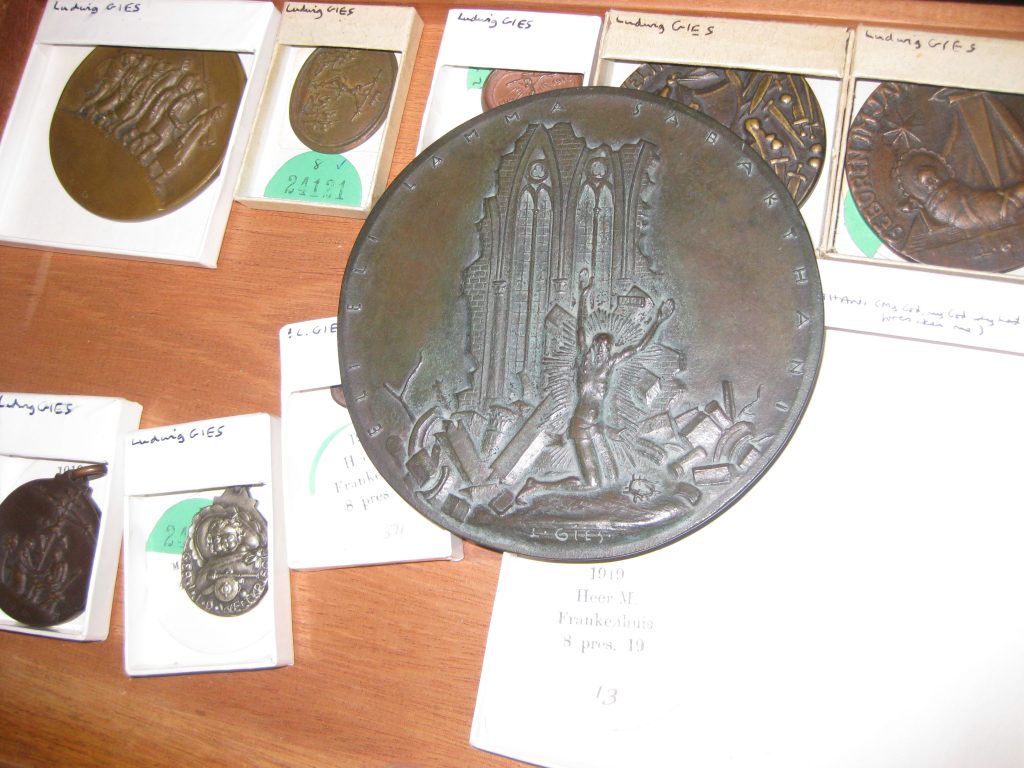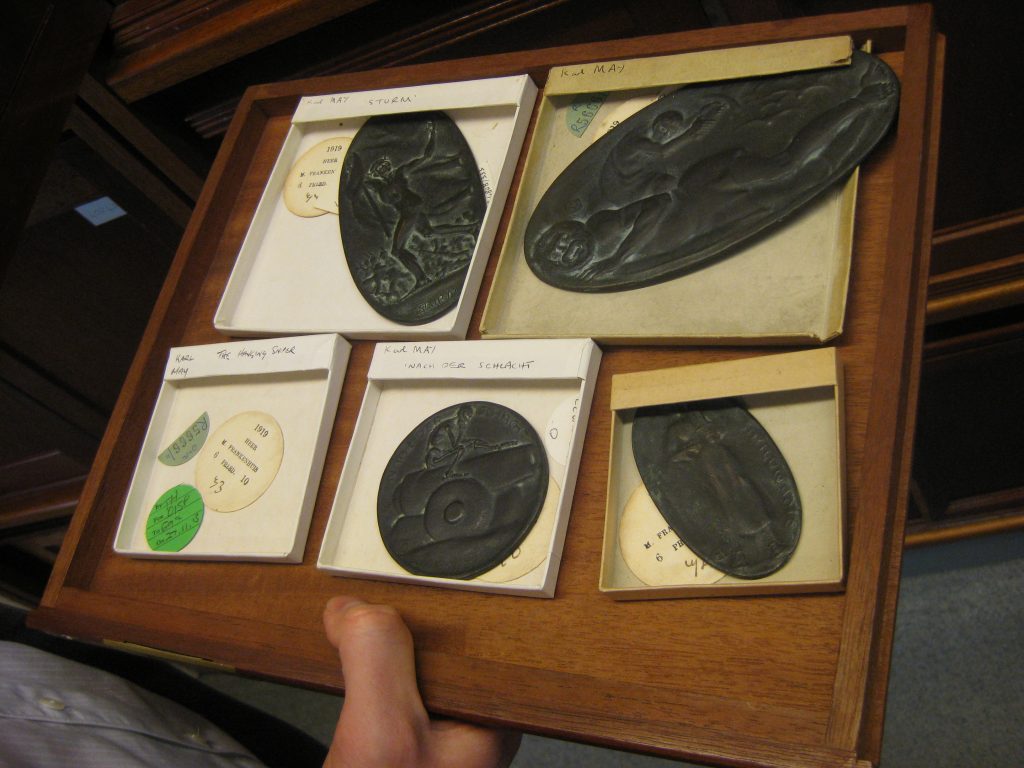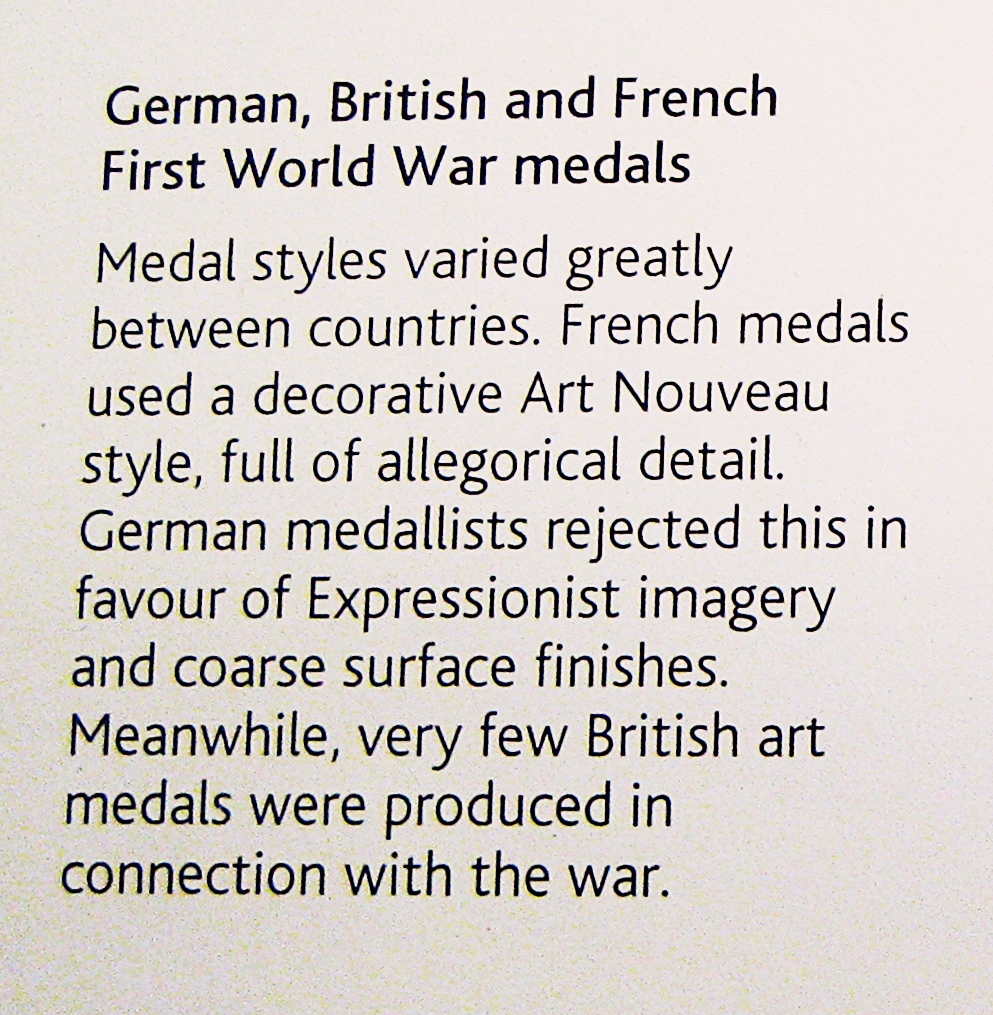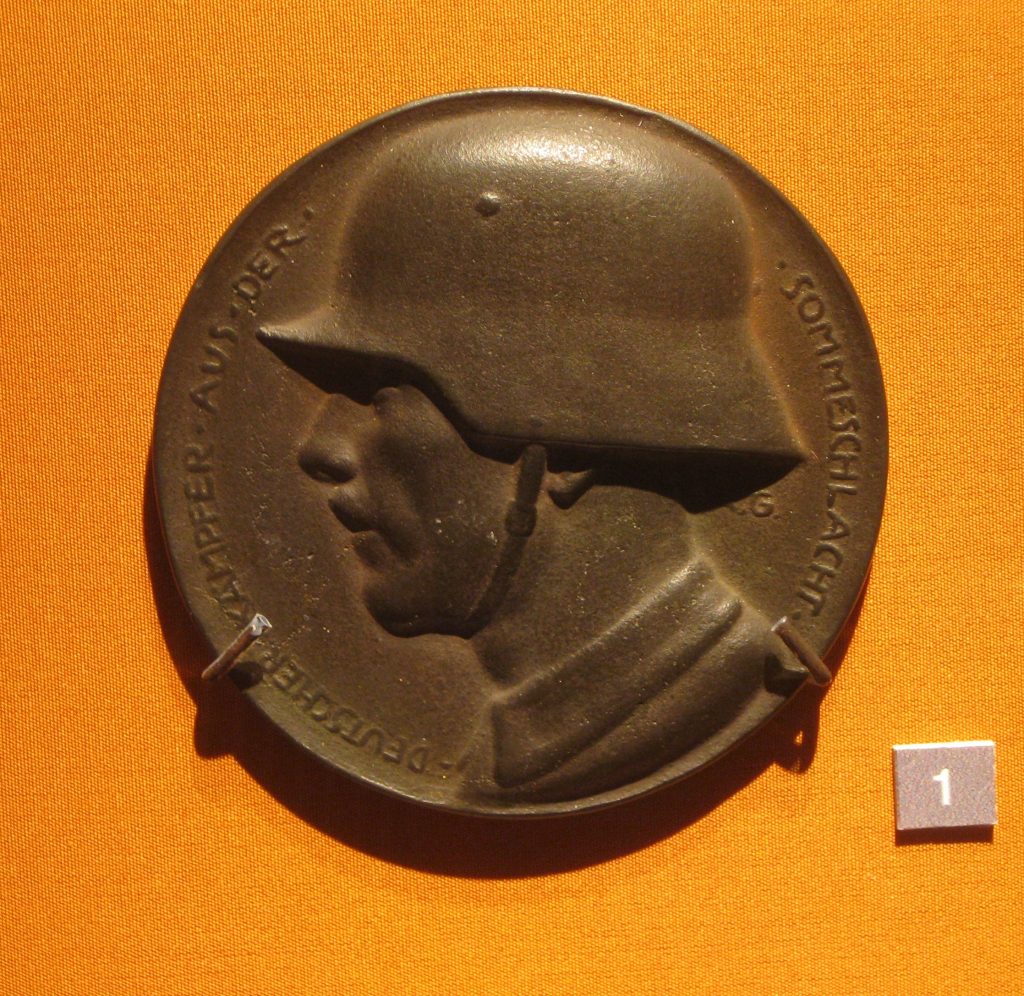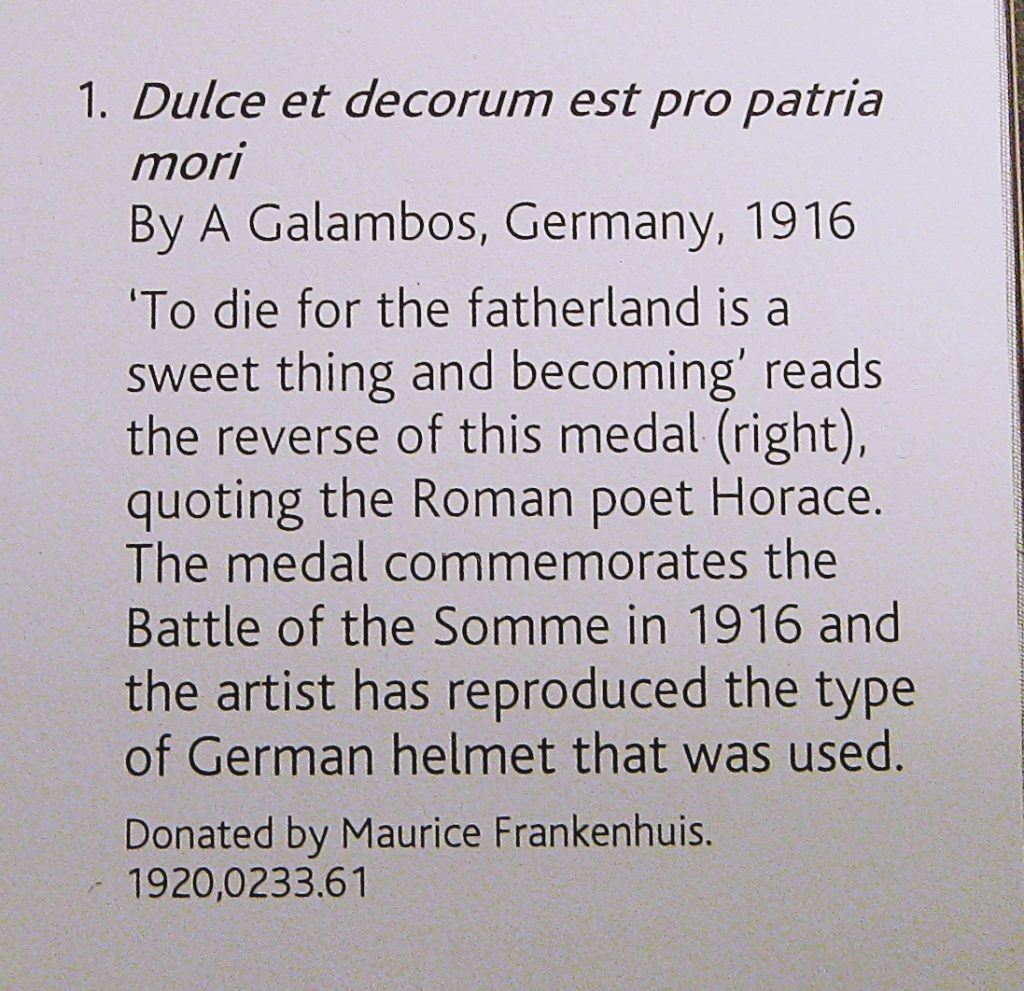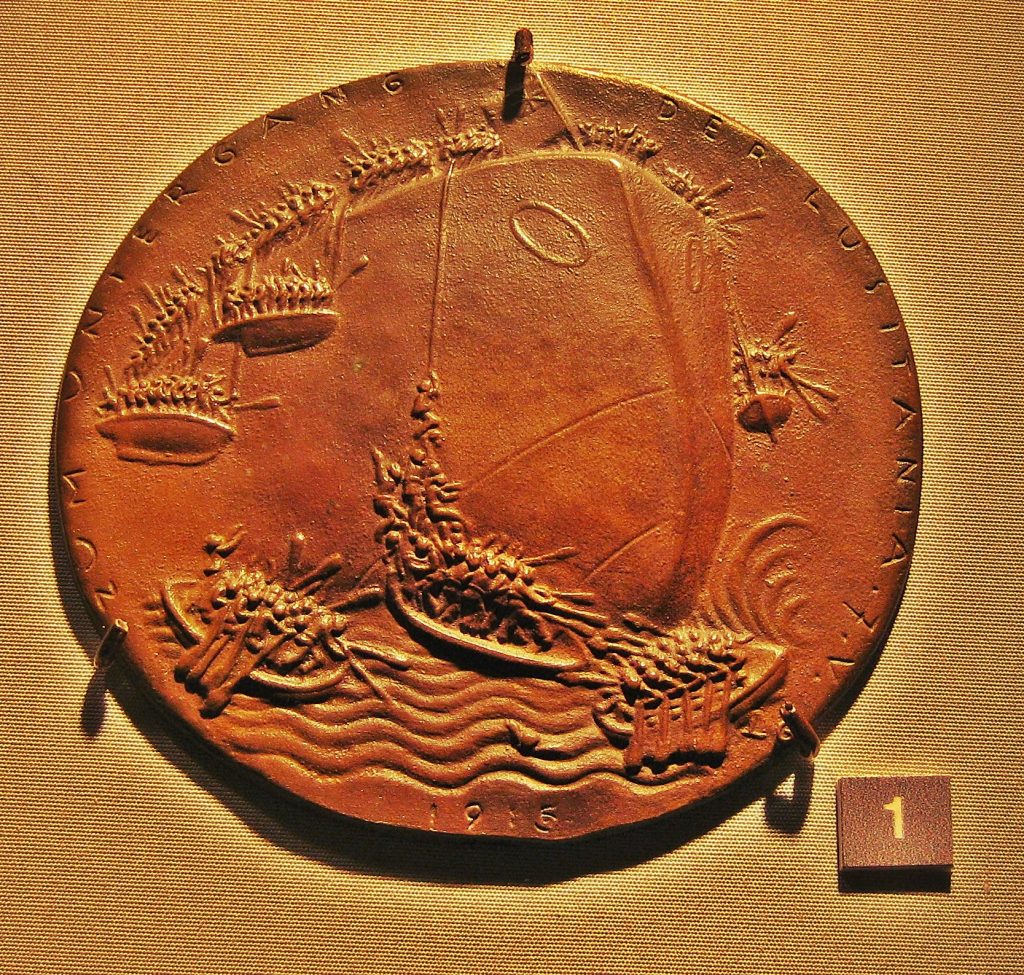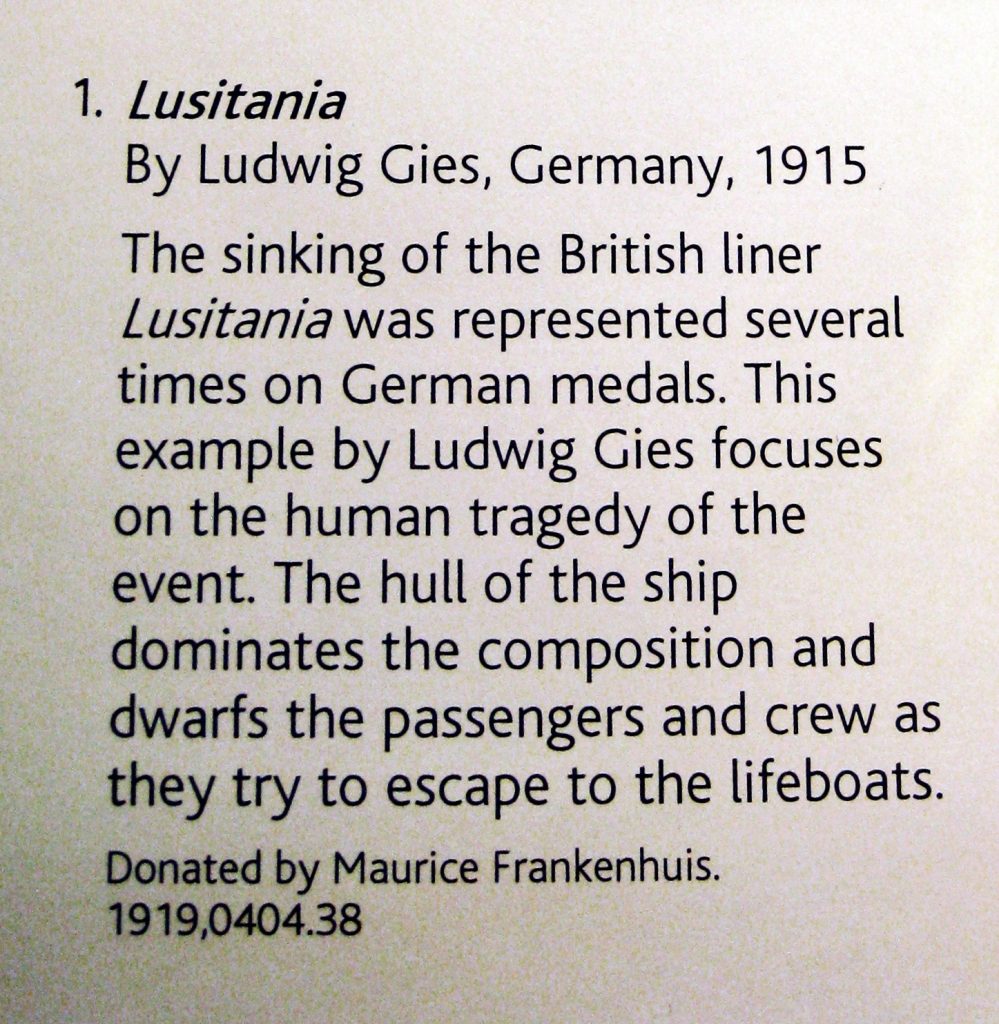The British Museum (London, England)
WWI Medals Donated to British Museum

Almost 600 medals were acquired by the British Museum in London, England from M. Frankenhuis over the years in 1919-1921, mostly the product of German artists. George Hill, the Keeper of the British Museum was keen on acquiring these significant medals for the British Museum Collection since it was not possible for them to obtain from the belligerent countries during the first World War 1914 – 1918. However, as a citizen of neutral Netherlands, M. Frankenhuis was able to procure these medals. Although aliens were barred from England in 1919, these medals were “deemed of value to the nation” and in exchange Maurice Frankenhuis was granted permission to come to England.
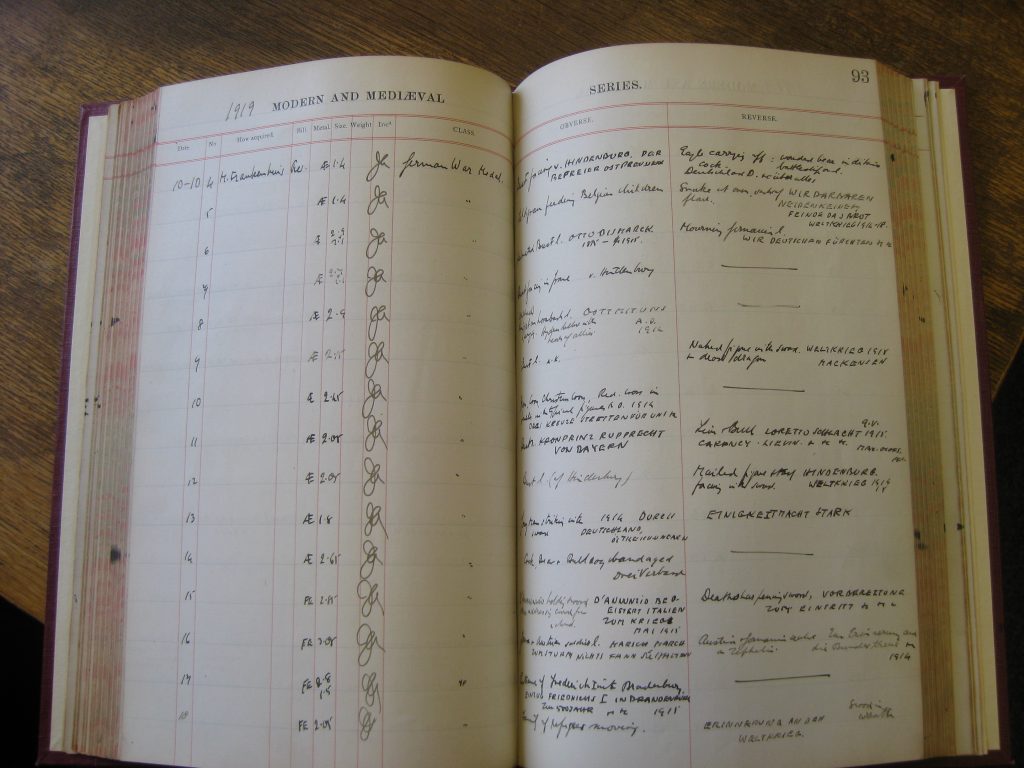
Each medal was hand entered into the ledger, with attribution and description; Date, Number, Metal, Size, Classification (German War Medal), and Obverse and Reverse descriptions.

Karl Goetz medals 
Ludwig Gies medals 
Karl May medals
The exceptionally large medal shows the Ruins of the Reims Cathedral in Paris (designed by Gies) with the legend “Eli Eli Lamma Sabakthani” (from Psalms) which translates as ‘My God, My God, why hast thou forsaken me’. The assault by 300 German artillery shelling continued for 4 years throughout the war.
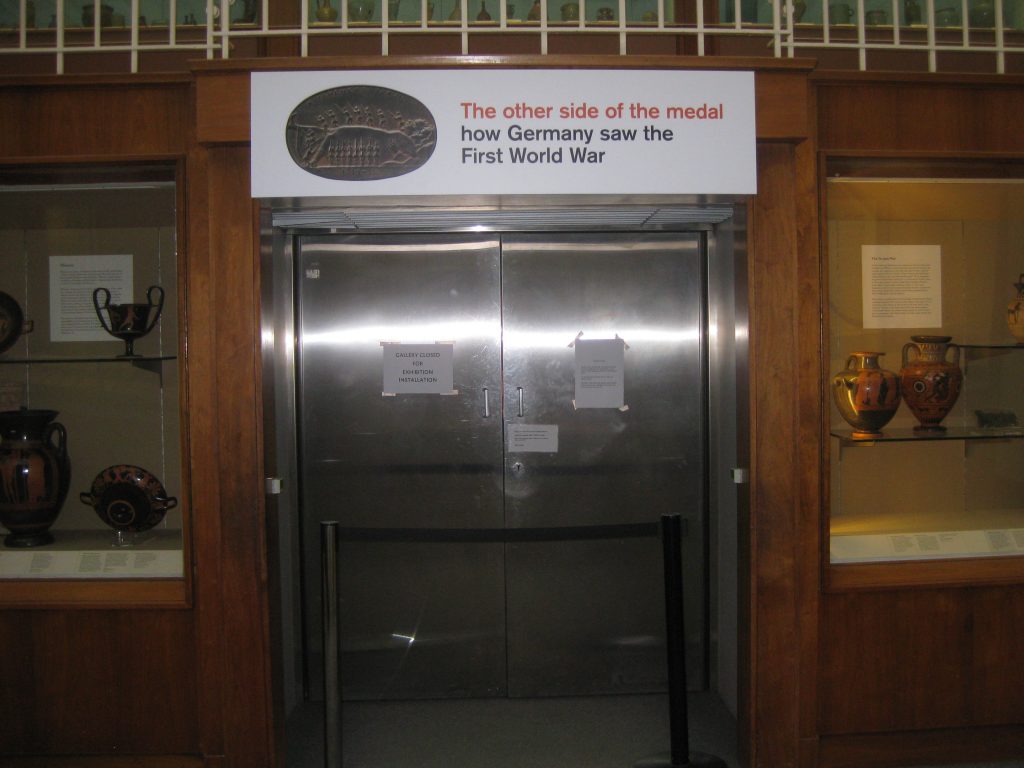
British Museum Centennial Exhibit 2014
Essay ‘Mediocre essays in medallic vituperation’ by Thomas Hockenhull, Department of British Museum Coin & Medals
This exhibit presented selections of the Frankenhuis Collection of war medals from Germany, France and England from medalists known to employ dramatic and propaganda motifs in their artistic rendition. The interpretation of various countries and expressions of the futility of war and loss of life are evident on some of these medals.

Peace – The end of the war brought a fragile peace to the world. The Allies punished Germany for its part in the conflict by enforcing huge monetary reparations. Medals that commemorate this peace vary considerably in style and illustrate the different perspectives of the countries that produced them.
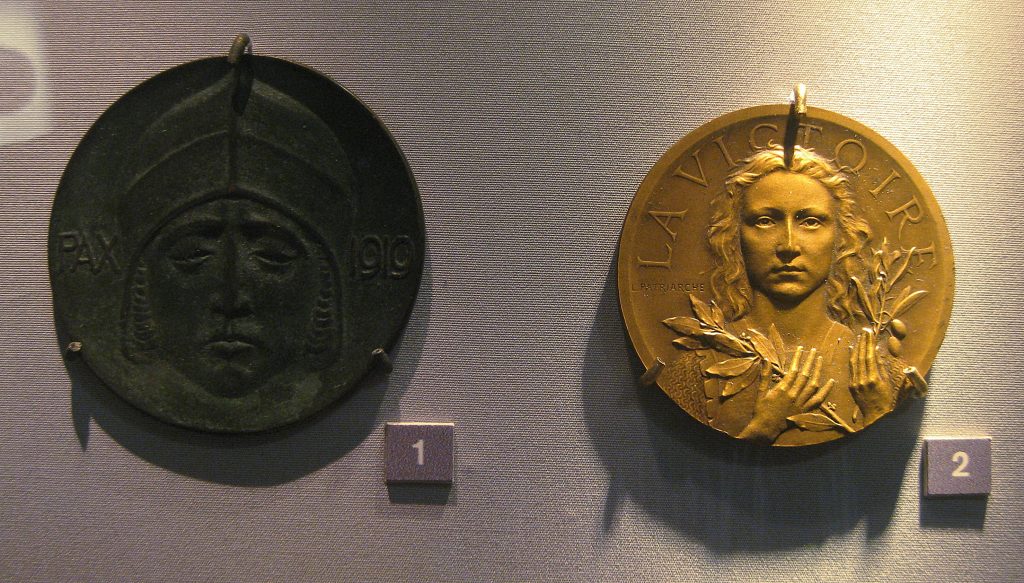
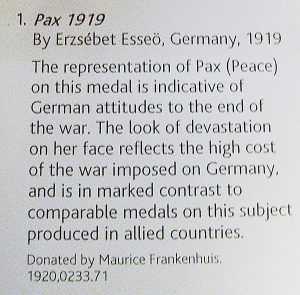

On May 7, 1915, a German submarine sank the Cunard liner “Lusitania,”
which was transporting civilians, 114 of them Americans. Out of a
passenger list of 2000, 1200 were drowned on the high seas. Following
this savage act, the Germans launched a policy of “unrestricted'”
submarine warfare, despite protests from the entire civilized world.
Not only warships were attacked, but merchant ships of neutral
countries as well. The United States — which at first was anxious
to maintain neutrality – was forced to declare war on Germany on
April 6, 1917.

War at Sea 
